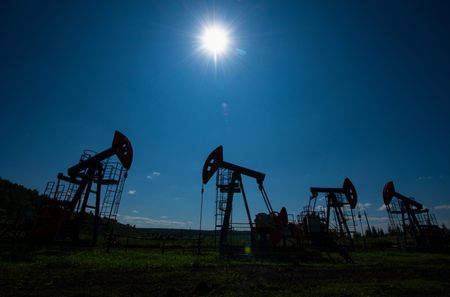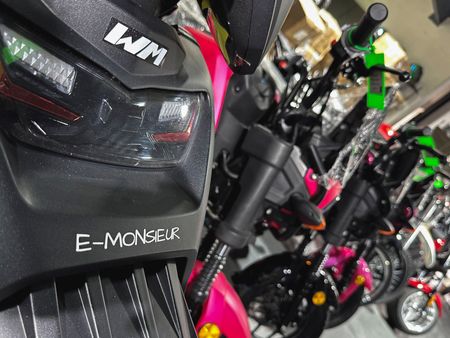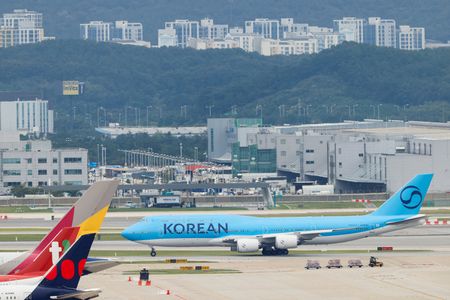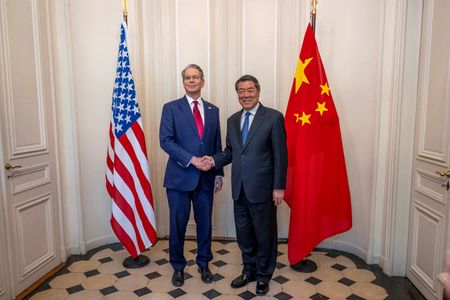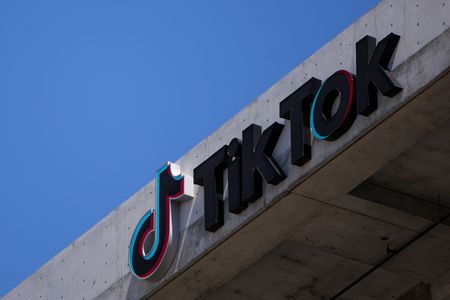By Kevin Buckland
TOKYO (Reuters) – The longest-dated Japanese government bond yields soared to all-time highs on Tuesday, with worries about demand catalyzed by a poor 20-year debt auction, in a headache for the Bank of Japan as it attempts to exit from a decade of ultra-easy policy.
The 20-year JGB yield rose as much as 15 basis points to 2.555%, the highest since October 2000, after the Ministry of Finance announced the auction results in the early afternoon in Tokyo.
The 30-year JGB yield soared 17 bps to a record high of 3.14%, while the 40-year yield surged 15 bps to 3.6%, also an all-time high.
“Investors’ demand for duration is structurally slowing down,” JPMorgan analysts said in a research note.
“While price formation without intervention from the MOF and the BOJ is ideal, some form of action is needed to stop the collapse of super-long JGBs at present, or there could be further super-long bond shocks triggered by downgrades or additional fiscal measures.”
Super-long JGB yields have been rising for weeks against a backdrop of elevated U.S. Treasury yields, with those on 30-year bonds spiking to 1-1/2-year peaks above 5% on Monday in the aftermath of a Moody’s downgrade.
Worries have also been building over Japan’s fiscal position, with calls from both ruling coalition and opposition lawmakers for consumption tax cuts ahead of an upper house election, slated for July.
Deeply unpopular Prime Minister Shigeru Ishiba has so far resisted those calls, telling parliament on Monday that Japan’s fiscal situation was worse than that of Greece at the height of the European debt crisis, according to local media reports.
UNWINDING STIMULUS
Japan’s central bank under Governor Kazuo Ueda has steadily been reducing support for the market by paring its monthly bond purchases, unwinding the aggressive monetary stimulus implemented by predecessor Haruhiko Kuroda.
However, some bond market participants urged the BOJ to boost buying of super-long bonds, or terminate tapering for that maturity, in the wake of sharp rises in their yields, a summary of opinions collected by the central bank showed on Tuesday.
A measure of bond market functionality plummeted to its lowest in two years, BOJ data showed on Monday.
“Market liquidity for super-long JGBs has declined sharply, so the BOJ should consider responding nimbly, such as by halting taper, increasing the amount it buys,” an opinion quoted in the summary showed.
Many analysts cited a lack of “stability” in the super-long sector in the run-up to the 20-year JGB auction, with the poor results “highlighting persistent supply-demand softness in the super-long sector and fuelling concerns over who, if anyone, will step in to buy,” said Shoki Omori, chief desk strategist at Mizuho Securities.
Brokers and investors “appear reluctant to hold inventory, raising the likelihood of a sell-off spiral that extends beyond the 20-year tenor into both the 10-year and 30-year markets”, Omori said.
The 10-year JGB yield climbed as much as 4.5 bps to 1.525%, its highest level since March 28.
Benchmark 10-year JGB futures fell as much as 0.47 yen to 138.78 yen, the lowest since April 2, when U.S. President Donald Trump announced his “reciprocal” tariffs – since put on hold – on the rest of the world. Bond yields move inversely to prices.
The five-year JGB yield added 2 bps to 1.015%, a high since April 2, while two-year yields rose to 0.73% for the first time since April 3.
BALANCING ACT
The BOJ faces a difficult balancing act, with policymakers keen to continue raising interest rates. Influential Deputy Governor Shinichi Uchida told parliament on Monday that policy tightening would resume if the economy rebounded from an expected hit from higher U.S. tariffs, as the central bank forecasts.
A thaw in U.S. trade relations in recent weeks, particularly with respect to China, has put the BOJ back on track to raise rates again early next year in the minds of investors, according to Masayuki Kichikawa, chief macro strategist at Sumitomo Mitsui DS Asset Management.
Swaps put the odds of a quarter-point hike by year-end at a coin toss. The policy rate currently stands at 0.5%.
“Many investors are probably thinking, especially for super-long bonds, what yield level is consistent with a policy rate at, for example, 1.25% and no support from BOJ buying,” Kichikawa said.
“We are in a process of finding that equilibrium. It’s a process of trial and error.”
(Reporting by Kevin Buckland; Editing by Savio D’Souza, Varun H K and Alex Richardson)


